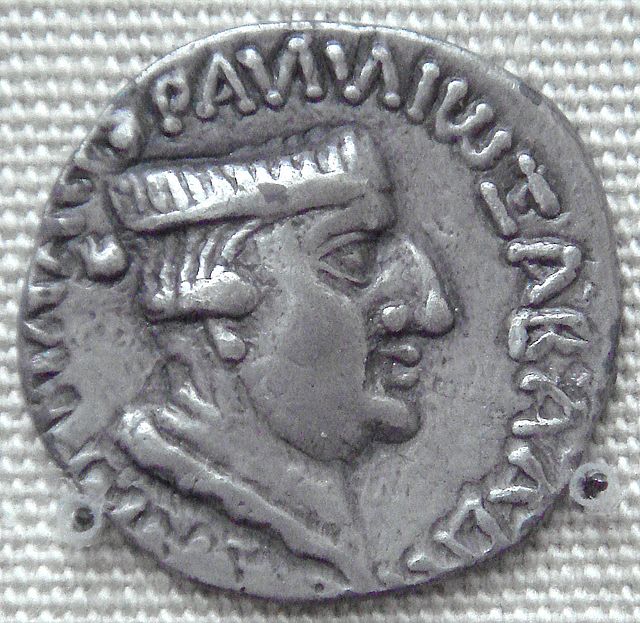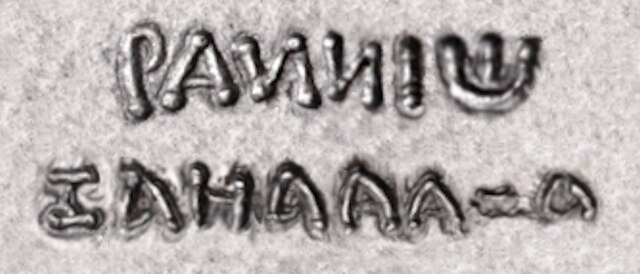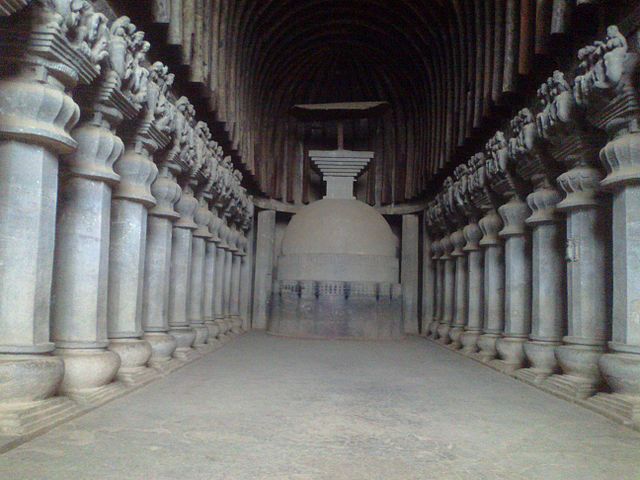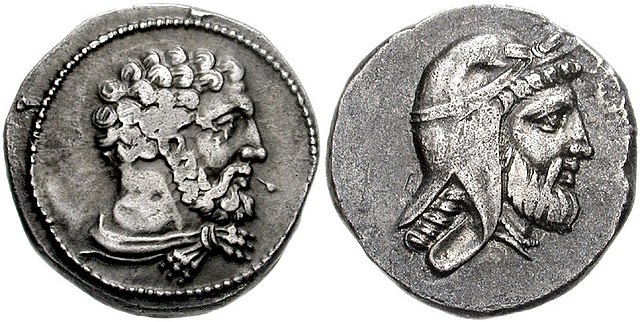The Western Satraps, or Western Kshatrapas were Indo-Scythian (Saka) rulers of the western and central parts of India, between 35 and 415 CE. The Western Satraps were contemporaneous with the Kushans who ruled the northern part of the Indian subcontinent, and were possibly vassals of the Kushans. They were also contemporaneous with the Satavahana (Andhra) who ruled in Central India. They are called "Western Satraps" in modern historiography in order to differentiate them from the "Northern Satraps", who ruled in Punjab and Mathura until the 2nd century CE.
Coin of Bhumaka (?–119). Obv: Arrow, pellet, and thunderbolt. Kharoshthi inscription Chaharasada Chatrapasa Bhumakasa: "Ksaharata Satrap Bhumaka". Rev: Capital of a pillar with seated lion with upraised paw, and wheel (dharmachakra). Brahmi inscription: Kshaharatasa Kshatrapasa Bhumakasa.
Coin of Nahapana (whose rule is variously dated to 24-70 CE, 66-71 CE, or 119–124 CE), a direct derivation from Indo-Greek coinage. British Museum.
The Greco-Prakrit title "RANNIO KSAHARATA" ("ΡΑΝΝΙω ΞΑΗΑΡΑΤΑ(Ϲ)", Prakrit for "King Kshaharata" rendered in corrupted Greek letters) on the obverse of the coinage of Nahapana.
Hall of the Great Chaitya Cave at Karla (120 CE)
A satrap was a governor of the provinces of the ancient Median and Persian (Achaemenid) Empires and in several of their successors, such as in the Sasanian Empire and the Hellenistic empires. A satrapy is the territory governed by a satrap.
The Herakleia head, probable portrait of a Persian (Achaemenid) Empire Satrap of Asia Minor, end of 6th century BCE, probably under Darius I
A dignitary of Asia Minor in Achaemenid style, c. 475 BC. Karaburun tomb near Elmalı, Lycia
Coin of Themistocles, a former Athenian general, as Achaemenid Empire Satrap of Magnesia, c. 465–459 BC
Coinage of Tiribazos, Satrap of Achaemenid Lydia, 388–380 BC








